MAHA KUMBHABHISHEKAM COUNTDOWN
MAHA KUMBHABHISHEKAM SIGNIFICANCE
A Temple is a home of the Divine, meant for collective spiritual benefit and upliftment. The omnipotence of the supreme is manifested into Idols by Mantra Sakti at the time of consecration (PrathiSthapana) through a precise process ordained by the scriptures called Agamas, thereby making the Idols into Deities.
Kumbhabhishekam is derived from the Sanskrit words Kumbha (meaning metal or earthern vessel) and Abhishekam (sprinkling of holy water). Kumbhabhishekam literally means pouring of sacred water (from holy rivers or ritually purified) from the vessels over the Vigrahas (Deities) and the temple Gopurams (towers). Proir to this, the divine energy and spirit are invoked through religious rituals and homas, and transferred to the kumbhas containing the holy water.

HOW IS MAHA KUMBHABHISHEKAM PERFORMED?
At the start of Maha Kumbhabhishekam, the divine power of the main Deities (Moola Vigrahas) is temporarily transferred by the priests, following procedures of Agama, into holy water (Mantra Jalam) collected in Kalashas (Pots). These Kalashas are initially brought into a makeshift temple called Balalayam. Between May 11th and 15th, 2022, the Kalashas are relocated into Temple’s Yagashala, where offerings are made into the holy fire, and daily worship, rites, and other special ceremonies are undertaken. Until the final stages of Maha Kumbhabhishekam, the Deities are worshipped in the Kalashas. Upon completion of Temple renovations and replacement of Ashta Bandhana (to secure Idols to peetams), the divine power in the Kalashas is transferred back to the Moola Vigrahas by pouring the Mantra Jalam (holy water preserved in Kalashas) on Temple Vimanams and Gopurams, while chanting elaborate mantras. This process is called Maha Samprokshana and Ashtabandhana Jeernodharana - together, called as Maha Kumbhabhishekam.
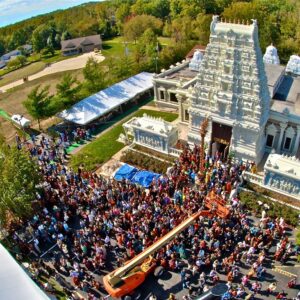
How is Temple Preparing? How can you participate and support ?
At the start of Maha Kumbhabhishekam, the divine power of the main Deities (Moola Vigrahas) is temporarily transferred by the priests, following procedures of Agama, into holy water (Mantra Jalam) collected in Kalashas (Pots). These Kalashas are initially brought into a makeshift temple called Balalayam. Between May 11th and 15th, 2022, the Kalashas are relocated into Temple’s Yagashala, where offerings are made into the holy fire, and daily worship, rites, and other special ceremonies are undertaken. Until the final stages of Maha Kumbhabhishekam, the Deities are worshipped in the Kalashas. Upon completion of Temple renovations and replacement of Ashta Bandhana (to secure Idols to peetams), the divine power in the Kalashas is transferred back to the Moola Vigrahas by pouring the Mantra Jalam (holy water preserved in Kalashas) on Temple Vimanams and Gopurams, while chanting elaborate mantras. This process is called Maha Samprokshana and Ashtabandhana Jeernodharana - together, called as Maha Kumbhabhishekam.
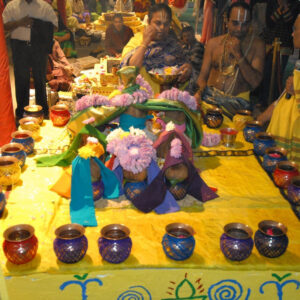
Temple Structure Upgrades & Sanctum Renovations
- Restore Temple walls, doors, windows , carpet replacement, fence & outside pathways
- Restore Temple Vimanams & cleaning of all Gopurams
- Clean and repair all Shrines and Vimanams
Perform improvements within Artha Mandapams and Sanctorums - Perform necessary improvements to Deities, including Repair & replace Deity Prabhavalis and Vimana Kalashas
- Perform improvements to Dwaja Sthambams and Construction of Balalayam and Yagashala
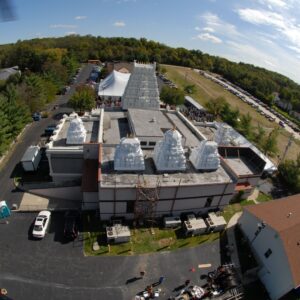
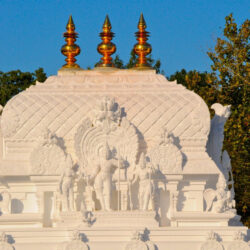
Vimana Kalasa
Vimana in Temple is the structure present over and around the main shrine or garbhagriha, the place where the temple deities are present. the temple architecture
Read More

Kalasa
Hindu temples typically have Kalasam at the top of temple towers. These Kalasam in form of inverted pot is one of the prominent symbol of temples.
Read More
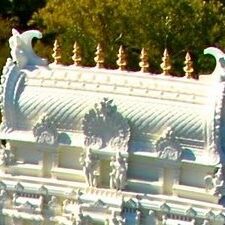
RajaGopuram Kalasa
Read More